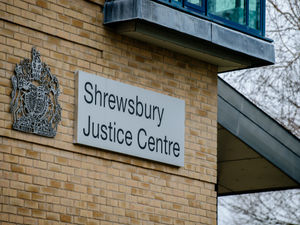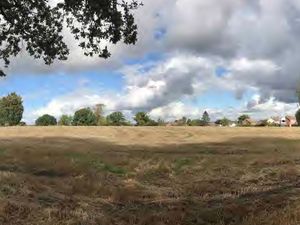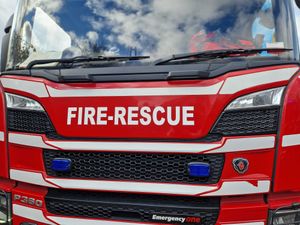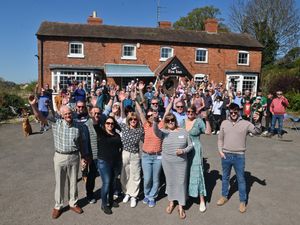Battle that proved A Bridge Too Far
It wasn't the homecoming Tom Brewin had been hoping for.
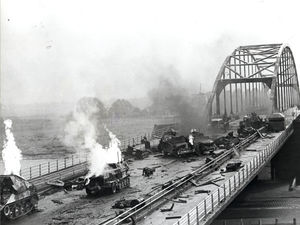
“The 10-day soldier, that’s what my dad called me,” recalls the Arnhem veteran, now 94.
Tom's father Alvin, a former sergeant in the Coldstream Guards, had served the entire duration of the First World War. So when his son was captured by the Germans within days of landing during the ill-fated Operation Market Garden in the Arnhem region of Holland, it was inevitable he would come in for a bit or ribbing.
Ironically, Tom, who is now 91, was worried he would miss out on the action altogether when he went to offer his services at the Army recruitment office in Wolverhampton.
“I had just turned 18, and I hadn’t had my call-up papers," he says. "I thought the war was going to be finished before I got my foot in the door. I didn’t want to be left out.”
The call-up papers came soon enough, and when Field Marshall Bernard Montgomery launched his audacious and plan to bring the war to a swift end, it led to Tom spending the next eight months in a PoW camp.
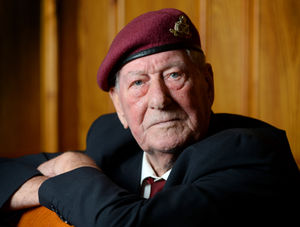
It is 75 years this week since Tom, a private in the 2nd South Staffordshire Regiment, took part in the eight-day campaign, which at the time was the largest airborne operation of the war.
In theory it sounded so simple, and Tom, who was desperate for a bit of adventure, felt little fear as he was briefed on the plan.
The allied invasion of Normandy had gone better than expected, and there seemed little to stop the forces sweeping through northern France and Holland as they headed towards Germany. The plan was for paratroopers and glider-based soldiers to be dropped in Arnhem on the other side of the Rhine, take control of the bridges, opening the way for armoured units to steam on towards Germany’s industrial heartlands of the Rhur.
But things didn’t go quite according to the script.
Tom, who lives in the Penn Fields area of Wolverhampton, felt a sense of relief tinged with excitement when his glider finally took off from Manston Aerodrome, near Margate.
“We weren’t afraid, we never gave it a moment’s thought. We thought it was going to be a piece of cake,"he says.
“We had seen so many operations cancelled, we were all pretty frustrated, and we just wanted to get on with it."
Tom landed at Wolfheze, around six or seven miles north-west of Arnhem, around 2.30pm on September 17, 1944, and was told to stay put until the following morning, keeping the landing zone clear for a fresh batch of gliders. The following day the instructions changed, and the men were ordered to head for the main bridge at Arnhem, and it was then that things started to go awry.
“We set off for Arnhem about 8am, it was a lovely day,” says Tom. “But it was too far, I don’t know why we landed so far away.”
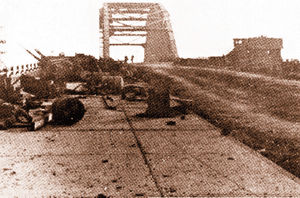
Allied intelligence had failed to pick up on the fact that two German SS tank divisions were already based in Arnhem, leaving the lightly-armed airborne troops hopelessly out-gunned.
“We got so far, probably within a couple of miles of the bridge, but we then had to turn back. We could see that the Germans were there, they were firing at us, and there was no way we could get through.”
They were redirected to Oosterbeek, about three miles west of Arnhem, but again their progress was blocked. “The Germans were brilliant,” he says. “We had invaded on the Sunday, but by the Monday they were in all the right places to stop us. They knew we were after the bridge.”
A machine-gun post was set up inside a house along the Arnhem-Oosterbeek Road to cover the flood plain, before coming under fire from German tanks.
Tom's platoon took up position in the grounds of the ‘Old Church’, the Dutch Reformed Church in Oosterbeek on the Wednesday, but by this time – three days after they had landed full of bravado – it was clear the game was up.

“We should have got to the bridge on the Monday, but we were still nowhere near it,” he says.
“The RAF had done a brilliant job, putting themselves in great danger to drop our supplies, but the Germans got most of them. We had very little food, I don’t know how we managed to live for days and days without eating, but we just didn’t think about it.”
On Sunday night Tom was ordered to head for the river, ready to be evacuated the following evening, but it was a hopeless task.
“There were about 300 or 500 of us on the river bank, but the boat could carry only 10 at a time,” he says.
“Some of the men decided to swim for it, but the current was so strong, and I watched many of them drown. I decided I wasn’t going to risk going into the river.”
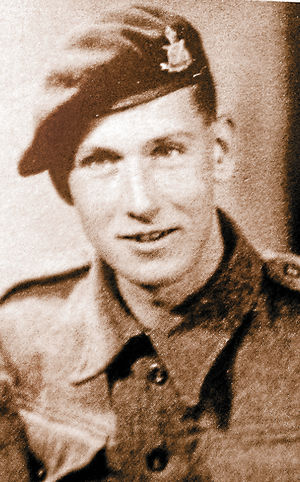
The evacuation continued until dawn when the boat suddenly disappeared. “I don’t know whether the man in the boat abandoned us, or of course he could have been shot himself,” says Tom. After that, there was nothing to do but wait for the Germans to come, and after just 10 days, Tom's military adventure was over.
Of the 10,000 men who landed at Arnhem, nearly 2,000 were killed, and 6,854 were taken prisoner.
“When we were captured, a couple of the Germans came into the warehouse where we were waiting, and they brought a field kitchen. They made us a potato soup, and it was beautiful, the best soup I had ever tasted. It was the first time I had eaten properly since leaving England.”
Private Norman Price, from Bayston Hill in Shrewsbury, was also in a Horsa glider during the operation. Incredibly, he managed to evade capture by the Germans by pretending to be a pig.
Pte Price was one of 28 troops from the South Staffordshire Regiment who became stuck behind enemy lines north of Tilburg when the tow rope on their glider broke.
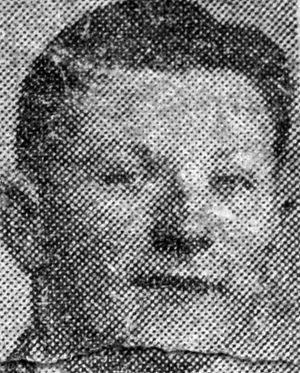
Members of the Dutch Resistance were quickly on the scene, warning the soldiers to leave immediately, as the Germans had seen the glider come down.
They were guided to a barn near the River Maas where they were joined by 15 stranded American soldiers from the 101st Airborne Division.
With the help of the Resistance and Dutch civilians, the 28 men moved from hiding place to hiding place, ending up in St Norbertus asylum.
Things took a critical turn when on October 14 a large group of members of the Luftwaffe arrived and billeted themselves in the kitchen of the asylum.
The monks and nuns who ran the asylum provided some of the men with overalls and habits.
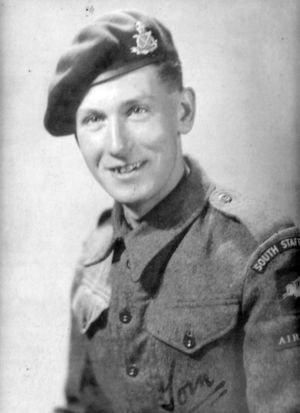
Pte Price avoided suspicion by living with the pigs on all fours, squealing and eating pig swill, said his niece Anne Adams, in a 2012 interview.
"Although the Germans searched a few times, they never touched him," she said.
The troops crept out one night through the back gardens of nearby houses, and made their way across fields and ditches and reached a farm.
On October 23, after more than a month behind enemy lines, the Staffords arrived at Boxtel, which had been abandoned by the Germans, and rejoined allied forces.


